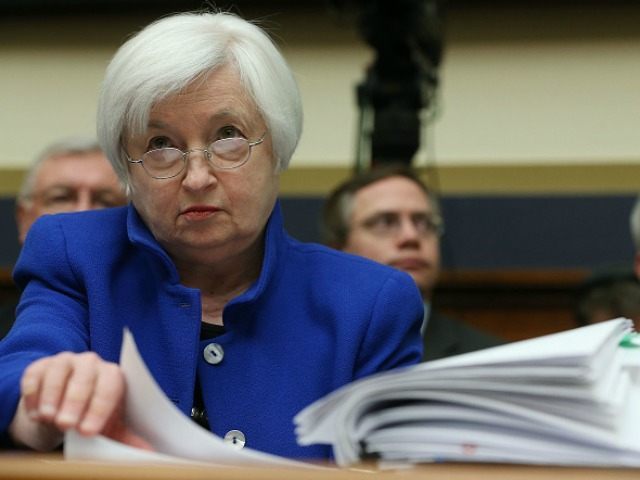Chairman Janet Yellen says the Federal Reserve is delaying hiking interest rates. That could mean the rapidly inflating real-estate bubble is headed toward another crisis.
The Fed scaled back its forecast for how interest rates will rise in 2016, citing the potential impacts from a weaker global growth and potential financial market turmoil on the U.S. economy.
The central bank’s Open Market Committee, which sets short-term interest rates, decided to maintain the current benchmark federal funds rate at between 0.25 percent to 0.5 percent, according to its March 16 release following a 2-day meeting in Washington, D.C.
The “dovish” economic outlook pushed the U.S. Dow Jones Industrials up 74.23 points to a new 2016 closing high, and sent the “VIX” cost to hedge market volatility to its lowest level since early December.
The top stock market gainers were concentrated in the materials sector, which jumped 1.74 percent on expectations that continuing Federal Reserve interest rate suppression would further stimulate a red-hot housing market that is already in bubble territory.
After the 2002 to 2007 housing bubble burst, the Federal Reserve responded to what it called the most severe economic downturn since the Great Depression by implementing both a zero-interest-rate-policy (ZIRP) and quantitative easing (QE) to spread cheap money into the financial markets to rescue plunging real estate prices.
As a result of the Fed’s muscular interventions, the average interest rate in the U.S. for a 30-year-mortgage dropped from 6.08 percent in mid-2008 to 3.68 percent on March 16.
Despite U.S. inflation-adjusted incomes still being down slightly since 2008, the Fed’s low interest-rate policy basically cut the cost of mortgage payments in half and allowed Americans to qualify to purchase much more expensive homes.
Cheap money may not have created much economic growth, but housing prices, as measured by the S&P/Case-Shiller National Home Price Index, were up 5.4 percent last year and up by 30.1 percent from their early 2012 lows. As of the end of January, average U.S. home prices are only 3.7 percent off their all-time-high in early 2007.
But the ability of homeowners to qualify for more expensive homes has driven up the ratio of home prices to median household income. At the end of 2014, home prices had reached an all-time record ratio of 5.3 times the average U.S. household income. Although official 2015 data is not yet available, the ratio appears to have reached another all-time high of 5.5 times household income.
In comparison, the ratio was only about five times household income at the 2007 peak, and just 4 times income at the prior housing price peaks of 1987 and 2001, according to the St. Louis Federal Reserve Bank.
Many people say that a home is an individual’s best protection against inflation. But with inflation up only 2.2 percent last year, and 17.8 percent since the 2012 low, home prices are jumping twice as fast as inflation.
The Federal Reserve’s ZIRP and QE policies created artificially low interest rates that have been the “secret sauce” that reflated real estate.
On Feb. 24, when the price of crude oil was $31.58 a barrel, and the media worried about deflation and negative interest rates, Breitbart News published, “Welcome to the Risk of an Inflation Shock.” But three weeks later, the price of crude oil is $39.21 a barrel, and the media is reporting that inflation, at 2.3 percent, has “picked up in recent months.”
The Federal Reserve’s announcement that its policy is to continue to suppress interest rates recalls the captain of the Titanic, who sped up in an iceberg field because he thought his boat was indestructible.
But if inflation starts to burn bright and the Fed is forced to quickly raise interest rates, America faces another housing crisis dead ahead.

COMMENTS
Please let us know if you're having issues with commenting.